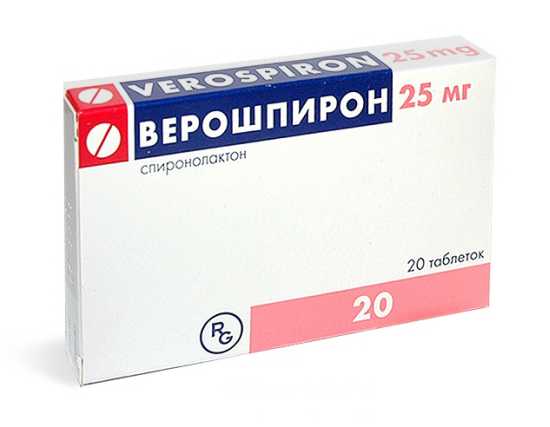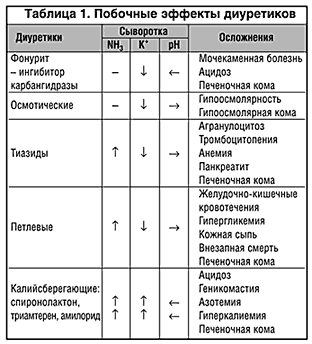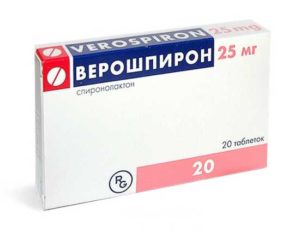Diuretic drugs: list and characteristics
Diuretics, or diuretics, are a chemically heterogeneous group of drugs. All of them cause a temporary increase in the excretion of water and minerals (mainly sodium ions) from the body through the kidneys. We offer the reader a list of diuretic drugs most commonly used in modern medicine, their classification and characteristics.
Diuretics are classified according to their "point of application" in the nephron. The simplified nephron consists of the glomerulus, proximal tubule, loop of Henle, and distal tubule. In the glomerulus of the nephron, water and metabolic products are released from the blood. In the proximal tubule, all the protein released from the blood is reabsorbed. The resulting fluid passes through the proximal tubule into the loop of Henle, where water and ions, in particular sodium, are reabsorbed. In the distal tubule, the reabsorption of water and electrolytes is completed, and hydrogen ions are released. The distal tubules unite into collecting ducts, through which the formed urine is excreted into the pelvis.
Depending on the site of action of diuretics, the following groups of drugs are distinguished:
1. Acting in the glomerular capillaries (eufillin, cardiac glycosides).
2. Acting in the proximal tubule:
- carbonic anhydrase inhibitors (diacarb);
- osmotic diuretics (mannitol, urea).
3. Operating in the loop of Henle:
- throughout: loop diuretics (furosemide);
- in the cortical segment: thiazide and thiazide-like (hypothiazid, indapamide).
4. Acting in the proximal tubule and ascending loop of Henle: uricosuric (indacrinon).
5. Acting in the distal tubule: potassium-sparing:
- competitive aldosterone antagonists (spironolactone, veroshpiron);
- non-competitive aldosterone antagonists (triamterene, amiloride).
6. Acting in the collecting ducts: aquaretics (demeclocycline).
Characteristic
Diuretics acting at the glomerular level
Eufillin dilates the renal vessels and increases blood flow in the tissues of the kidneys. As a result, glomerular filtration and diuresis increase. These drugs are most often used to enhance the effectiveness of other diuretic drugs.
Potassium-sparing drugs
These drugs slightly increase diuresis and excretion of sodium in the urine. Their distinguishing feature is the ability to retain potassium, thereby preventing the development of hypokalemia.
 The main drug from this group is spironolactone (veroshpiron). It is prescribed for the prevention and treatment of potassium deficiency that occurs with the use of other diuretics. Spironolactone can be combined with any other diuretic. It is used for hyperaldosteronism and severe hypertension. The use of spironolactone is especially justified in the treatment of chronic heart failure.
The main drug from this group is spironolactone (veroshpiron). It is prescribed for the prevention and treatment of potassium deficiency that occurs with the use of other diuretics. Spironolactone can be combined with any other diuretic. It is used for hyperaldosteronism and severe hypertension. The use of spironolactone is especially justified in the treatment of chronic heart failure.
Side effects include drowsiness, menstrual irregularities. This remedy has antiandrogenic activity and can cause an increase in the mammary glands in men (gynecomastia).
Potassium-sparing diuretics are contraindicated in severe kidney disease, hyperkalemia, urolithiasis, as well as during pregnancy and lactation.
Aquaretics
Medicines in this group increase the excretion of water. These agents counteract antidiuretic hormone. They are used for cirrhosis of the liver, congestive heart failure, psychogenic polydipsia. The main representative is demeclocycline. Side effects include photosensitivity, fever, nail changes, and eosinophilia. The drug can cause damage to the renal tissue with a decrease in glomerular filtration.
Aquaretics include lithium salts and vasopressin antagonists.
Side effects
 Diuretics remove water and salts from the body, changing their balance in the body. They cause the loss of hydrogen, chlorine, bicarbonate ions, leading to acid-base balance disorders. The metabolism changes. Diuretics can also cause damage to internal organs.
Diuretics remove water and salts from the body, changing their balance in the body. They cause the loss of hydrogen, chlorine, bicarbonate ions, leading to acid-base balance disorders. The metabolism changes. Diuretics can also cause damage to internal organs.
Violations of water and electrolyte metabolism
With an overdose of thiazide and loop diuretics, extracellular dehydration may develop. To correct it, it is necessary to cancel diuretics, prescribe water and saline solutions inside.
A decrease in the sodium content in the blood (hyponatremia) develops with the use of diuretics and at the same time dieting with salt restriction. Clinically, it is manifested by weakness, drowsiness, apathy, decreased diuresis. For treatment, solutions of sodium chloride and soda are used.
A decrease in the concentration of potassium in the blood (hypokalemia) is accompanied by muscle weakness up to paralysis, nausea and vomiting,. This condition occurs predominantly with an overdose of loop diuretics. For correction, a diet with a high content of potassium is prescribed, potassium preparations orally or intravenously. Such a popular remedy as panangin is not able to restore potassium deficiency due to the low content of the trace element.
Elevated blood potassium (hyperkalemia) is observed quite rarely, mainly with an overdose of potassium-sparing drugs. It is manifested by weakness, paresthesia, slowing of the pulse, the development of intracardiac blockades. Treatment consists in the introduction of sodium chloride and the abolition of potassium-sparing drugs.
Reduced magnesium levels in the blood (hypomagnesemia) may be a complication of therapy with thiazide, osmotic and loop diuretics. It is accompanied by convulsions, nausea and vomiting, bronchospasm, and heart rhythm disturbances. Changes in the nervous system are characteristic: lethargy, disorientation, hallucinations. This condition is more common in older people who abuse alcohol. It is treated by prescribing panangin, potassium-sparing diuretics, and magnesium preparations.
Low blood calcium concentration (hypocalcemia) develops with the use of loop diuretics. It is accompanied by paresthesia of the hands, nose, convulsions, spasm of the bronchi and esophagus. For correction, a diet rich in calcium is prescribed, and preparations containing this microelement.
Violation of acid-base balance
Metabolic alkalosis is accompanied by "alkalinization" of the internal environment of the body, occurs with an overdose of thiazide and loop diuretics. It is accompanied by indomitable vomiting, convulsions, impaired consciousness. For treatment, ammonium chloride, sodium chloride, calcium chloride are used intravenously.
Metabolic acidosis is an "acidification" of the internal environment of the body, which develops when carbonic anhydrase inhibitors, potassium-sparing agents, osmotic diuretics are taken. With significant acidosis, deep and noisy breathing, vomiting, and lethargy occur. To treat this condition, diuretics are canceled, sodium bicarbonate is prescribed.
Exchange disorders
Violation of protein metabolism is associated with potassium deficiency, leading to a violation of the nitrogen balance. It develops most often in children and the elderly with a low protein diet. To correct this condition, it is necessary to enrich the diet with proteins and prescribe anabolic steroids.
When using thiazide and loop diuretics, the concentration of cholesterol, beta-lipoproteins, and triglycerides in the blood increases. Therefore, when prescribing diuretics, lipids in the diet should be limited, and, if necessary, diuretics should be combined with angiotensin-converting enzyme inhibitors (ACE inhibitors).
Therapy with thiazide diuretics can cause an increase in blood glucose concentration (hyperglycemia), especially in patients with diabetes or obesity. To prevent this condition, a restriction in the diet of easily digestible carbohydrates (sugar), the use of ACE inhibitors and potassium preparations is recommended.
In persons with hypertension and impaired purine metabolism, an increase in the concentration of uric acid in the blood (hyperuricemia) is likely. The likelihood of such a complication is especially high in the treatment of loop and thiazide diuretics. For treatment, a purine-restricted diet, allopurinol, diuretics are combined with ACE inhibitors.
In the case of prolonged use of large doses of diuretics, a violation of kidney function with the development of azotemia (an increase in the concentration of nitrogenous waste products in the blood) is likely. In these cases, it is necessary to regularly monitor the indicators of azotemia.
allergic reactions
Diuretic intolerance is rare. It is most characteristic of thiazide and loop diuretics, mainly in patients allergic to sulfonamides. An allergic reaction can be manifested by a skin rash, vasculitis, photosensitivity, fever, impaired liver and kidney function.
Therapy for an allergic reaction is carried out according to the usual scheme with the use of antihistamines and prednisone.
Damage to organs and systems
The use of carbonic anhydrase inhibitors may be accompanied by impaired function of the nervous system. Headache, insomnia, paresthesia, drowsiness appear.
With intravenous administration of ethacrynic acid, toxic damage to the hearing aid can be observed.
Almost all groups of diuretic drugs increase the risk of developing urolithiasis.
Gastrointestinal disorders may occur, manifested by lack of appetite, abdominal pain, nausea and vomiting, constipation or diarrhea. Thiazide and loop diuretics can provoke the development of acute cholecystopancreatitis, intrahepatic cholestasis.
Possible changes in the hematopoietic system: neutropenia, agranulocytosis, autoimmune intravascular hemolysis, hemolytic anemia, lymphadenopathy.
Spironolactone can cause gynecomastia in men and menstrual irregularities in women.
When prescribing large doses of diuretics, blood thickens, as a result, the risk of thromboembolic complications increases.
Interaction with other drugs
 Diuretics are often used in conjunction with other drugs. As a result, the effectiveness of these drugs varies, and unwanted effects may occur.
Diuretics are often used in conjunction with other drugs. As a result, the effectiveness of these drugs varies, and unwanted effects may occur.
The combined use of thiazide diuretics and cardiac glycosides increases the toxicity of the latter due to hypokalemia. Their simultaneous use with quinidine increases the risk of its toxicity. The combination of thiazide drugs with antihypertensives has an increased hypotensive effect. With their simultaneous appointment with glucocorticosteroids, the likelihood of hyperglycemia is high.
Furosemide increases the ototoxicity of aminoglycosides, increases the risk of developing glycoside intoxication. When loop diuretics are combined with non-steroidal anti-inflammatory drugs, the diuretic effect is weakened.
Spironolactone increases the concentration of cardiac glycosides in the blood, enhances the hypotensive effect of antihypertensive drugs. With the simultaneous appointment of this drug and non-steroidal anti-inflammatory drugs, the diuretic effect is reduced.
Uregit causes increased toxicity of aminoglycosides and tseporin.
The combination of thiazide and loop diuretics and ACE inhibitors leads to an increase in the diuretic effect.
Principles of rational therapy with diuretics
 Diuretics should only be used when edema occurs. With a slight edematous syndrome, diuretics of plant origin (infusion of birch leaves, lingonberries, decoction of horsetail, diuretic collection), grape juice, apples and watermelons can be used.
Diuretics should only be used when edema occurs. With a slight edematous syndrome, diuretics of plant origin (infusion of birch leaves, lingonberries, decoction of horsetail, diuretic collection), grape juice, apples and watermelons can be used.
Treatment should begin with small doses of thiazide or thiazide-like diuretics. If necessary, potassium-sparing drugs are added to therapy, and then loop agents. With an increase in the severity of the edematous syndrome, the number of combined diuretics and their dosage increases.
It is necessary to choose the dosage in such a way that diuresis per day does not exceed 2500 ml.
Thiazide, thiazide-like and potassium-sparing drugs are preferably taken in the morning on an empty stomach. The daily dosage of loop diuretics is usually administered in two divided doses, for example, at 8 am and 2 pm. Spironolactone can be taken once or twice a day, regardless of meals and time of day.
In the first stage of treatment, diuretics should be taken daily. Only with a steady improvement in well-being, a decrease in shortness of breath and swelling, can they be used intermittently, only a few days a week.
Therapy of edema against the background of chronic heart failure must be supplemented, which significantly improves the effect of diuretics.
TV channel "Russia-1", program "About the most important" on the topic "Diuretics"




